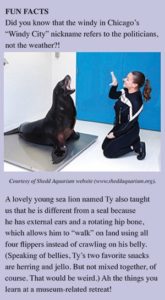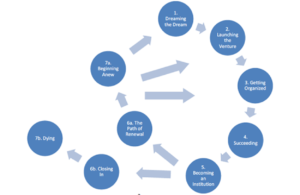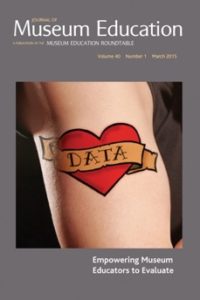The Little Engine that Is
“Courage is what it takes to stand up and speak. Courage is also what it takes to sit down and listen.”
Winston Churchill
Every August, as summer vacations wind down and autumn routines begin to wind up, the Museum Education Roundtable’s Board of Directors convenes for an annual retreat. As a national organization, this is the one time of year that we are all together, in person, beyond the confines of conference calls and Google hangouts. For a precious few days, we reflect, dream, plan, and transition from one fiscal year and board cohort to the next. Together.
The 2015 MER retreat was particularly exciting, because MER is in a truly exceptional place. MER is thriving. And as the JME40 celebrates the past 40 years of the Journal of Museum Education, and looks ahead to the next 40, the annual retreat is a great reminder that MER’s state of being is an important part of the JME40 story. In what follows I’ll share some highlights of how MER is doing and the key strategies that got us to this point. Hopefully they will resonate with change you are leading – or seek to lead – in your own program, department, organization, or board.
 First, let’s set the stage. One of the unusual things about the 2015 retreat is that for the first time ever, the MER board retreat happened outside of Washington, D.C. (Don’t worry, D.C., we’ll be back every other year!). We headed to Chicago, spending quality time at the Museum of Science and Industry and Shedd Aquarium. Not only was this fun to do, it symbolizes the many ways MER is branching out.
First, let’s set the stage. One of the unusual things about the 2015 retreat is that for the first time ever, the MER board retreat happened outside of Washington, D.C. (Don’t worry, D.C., we’ll be back every other year!). We headed to Chicago, spending quality time at the Museum of Science and Industry and Shedd Aquarium. Not only was this fun to do, it symbolizes the many ways MER is branching out.
What does it mean that MER is thriving? We have a clear focus on the Journal as our primary product and a fantastic editor-in-chief, editorial team, and new publisher to support it. We have reversed a downward trend in our membership, which is now steadily growing. We are using data in new ways, affording a deeper understanding of our audiences and helping improve our strategies for engaging them and expanding the reach of JME content. MER board members are working effectively and collaboratively, better positioning us as a group to focus on the heart of our work, rather than just the nuts and bolts of running a nonprofit.
How is this different from where MER was previously? Founded in 1969, MER is one of the longest-running museum education service organizations. Although longevity can be a valuable asset, navigating organizational life cycles can also be challenging. There are key points at which every organization must move forward, stagnate, or die. Sometimes these points are obvious, and sometimes you have to be paying attention. Around five years ago, the MER board decided we needed to take stock of where MER was and where we wanted to be. Thankfully we were not in crisis mode – but that was the point. We didn’t want to wait until we were. And with that, this small, mostly volunteer non-profit organization waded into the path of renewal.
What helped MER make the change? Looking back on it, we owe a great deal to a few key strategies.
-

“Choosing the Path of Renewal.” Organizational lifecycle graphic from William Bridges, Managing Transition: Making the Most of Change 2nd ed (Cambridge, MA: Da Capo Press, 2003), 88. Stopping and listening. When we took the time to ask ourselves where we were and where we wanted to be, the goal that truly captivated us was meaning-making: finding new meaning in our board service and better understanding (so we could better deliver) the meaning of MER to our constituents. Generations of great MER board members before us had “dreamed the dream,” launched the venture, gotten organized, and succeeded. At this point, we found ourselves doing things a certain way because “that’s what we do.” And, we realized we weren’t leveraging the collective knowledge and passion of the amazing people who were still joining the board, because we were all busy keeping the operation of MER going. It was time to question why we were doing what we were doing, to identify what was most important, and to envision how we wanted to be working instead. Our board was ready to move beyond nuts and bolts, into more substantive work.
- Streamlining. A critical juncture for us was affirming that what sets MER apart from other museum education service organizations is publication of the JME – the only peer-reviewed professional journal of museum education. With this affirmation, we went from the JME being one of many things we do to being at the heart of everything we do. This may sound simple, but the impact was huge. We stopped doing things we’d been doing for a while, in order to focus our energies on production of the JME and to realign our activities around it. Of equal importance was addressing a decline in our membership. We needed to know if it was our processes (we knew we had some procedural improvements to make) or a lack of value that was causing the decline, and what we could do to better engage the field.
- Setting goals and organizing our work. After taking stock of our situation and focusing in on board service, the JME, and our audience, we identified a few key goals that we wanted to accomplish (ones that gave a sense of momentum but felt realistic given our capacity). We reorganized our operating structure into Action Teams (Editorial, Readership Engagement, and Resources and Revenue), a Leadership Team, and Task Forces (to tackle discrete, time bound tasks) and each one made work plans to achieve the goals. We then used the goals and a “consent agenda” format to structure meeting agendas and reporting, which enabled us to increase information flow across the organization while decreasing meeting times (always appreciated by board members!). We created annual board reflections and used these, along with the reports, in advance, to maximize our time together at our retreats. We turned all of this into a new way of approaching our work strategically each year, and gave a lot of attention to board member recruitment and selection, leadership development, and succession planning as part of it.
- Experimenting. With clear goals, good communication, and early wins from the changes we’d tried out on our operating structure, we were able to experiment even more with leveraging JME content and increasing reader engagement. Over time we introduced new products like the Reader Guide and this blog, created new partnerships (i.e., providing content for EdCom’s Virtual Book Club), built a social media network, developed a new tagline, and conducted an audience survey. In all of these, we used data and evaluation more purposefully than ever before, as development and assessment tools. We also took the opportunity to explore new publishing opportunities, which led to a fantastic new partnership with Taylor & Francis, bringing even more benefits to our members after we launch in 2016.
 So, what happens next? All of the work just described has happened continuously over the last few years, moving us closer and closer to our goals with each step. Recognizing we still have more to do and refine, at our Chicago retreat we worked on a 3-5 year strategic plan. This helped us identify that MER is ready to move on from zeroing in, streamlining, and reorganizing to deepening, diversifying, and promoting. These will be embedded in all that we do moving forward, as we engage in truly meaningful board service (with more time now to focus on bigger issues in the field), increasing the value that we add to the field, and expanding our relationships with members and readers. Much of what we have put in motion internally is beginning to bear fruit externally – so stay tuned for exciting changes from MER, beginning in 2016!
So, what happens next? All of the work just described has happened continuously over the last few years, moving us closer and closer to our goals with each step. Recognizing we still have more to do and refine, at our Chicago retreat we worked on a 3-5 year strategic plan. This helped us identify that MER is ready to move on from zeroing in, streamlining, and reorganizing to deepening, diversifying, and promoting. These will be embedded in all that we do moving forward, as we engage in truly meaningful board service (with more time now to focus on bigger issues in the field), increasing the value that we add to the field, and expanding our relationships with members and readers. Much of what we have put in motion internally is beginning to bear fruit externally – so stay tuned for exciting changes from MER, beginning in 2016!
Of course, none of what MER accomplishes would be possible without the tradition of amazing, knowledgeable, and passionate board members who are willing to keep “dreaming the dream” and who will be driving MER and the JME forward over the next forty years. If in reading this blog you’ve been inspired by the work we’re doing and are interested in helping to continue its evolution – especially from a new angle or point of view – please consider volunteering or applying to become a MER Board Member (applications open in February each year). To adapt the words of W. Fusselman: “Today a reader, tomorrow a leader.” You never know what can happen!
Paige Faulkner has served on the Museum Education Roundtable for four years, as the Vice President, Strategic Planning Chair, and AAM Conference Liaison. She is an independent professional who specializes in strategic planning, professional development, public access, and multi-institutional collaborative projects.

